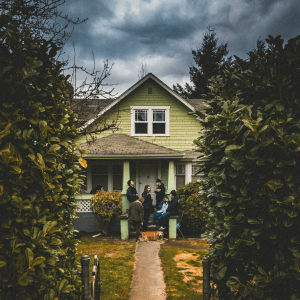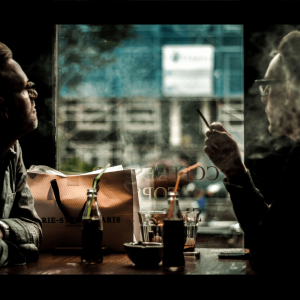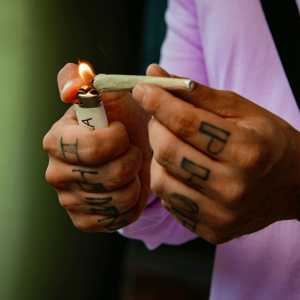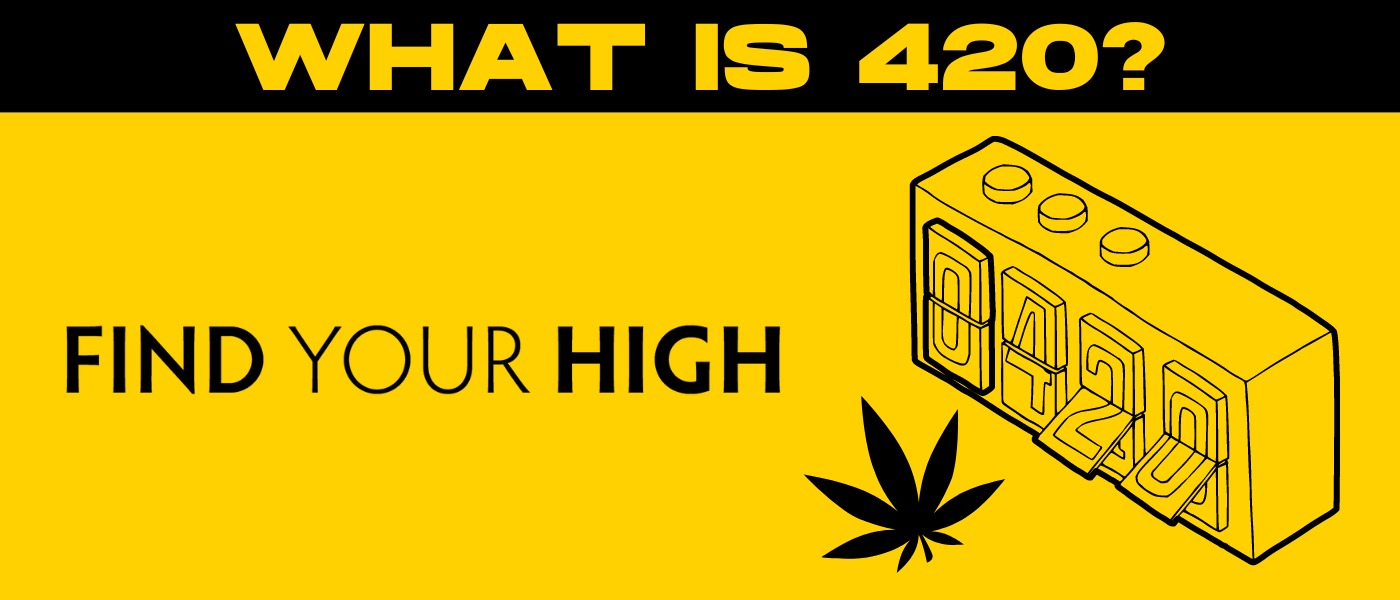.If you’ve ever found yourself wondering what is “420,” a code that seems to echo through cannabis culture, you’re not alone. This enigmatic number has evolved into a worldwide phenomenon, far transcending its humble origins and becoming a cultural sensation in its own right.
From stealthy whispers in high school hallways to bold proclamations at music festivals, the 420 culture is a testament to the enduring power of subcultures, sparking curiosity and camaraderie among its followers.
But what does it really mean? And why has it gained such a monumental significance over the decades?
In this blog, we’ll decipher the mystery of 420. We’ll get into the nitty-gritty of its roots, explore its impact on popular culture, and dig into the deeper ethos that it captures. Prepare yourself to begin on a journey through time, counterculture, and a whole lot of smoke signals.
The Origins of 420
The term ‘420’ has become a widely recognized and embraced universal code for marijuana in pop culture. It has found its way into music, movies, and even everyday conversations.
However, the origins of this intriguing term are shrouded in tales, myths, and a fair share of smoke and haze.
Some say it originated from a small group of high school friends in the 1970s who would meet at 4:20 p.m. to indulge in their shared passion: smoking marijuana. Others believe it has connections to a California penal code section or even a reference to Bob Dylan’s song lyrics.
Regardless of its true origin, ‘420’ has undoubtedly left a lasting impression on cannabis culture, igniting curiosity and fascination among cannabis aficionados and sparking conversations around the world.
The High School Legends
The real origin of 420 traces back to a group of five students at San Rafael High School in the early 70s. Known as “The Waldos” because they used to hang out by a wall, these teenagers embarked on a treasure hunt, guided by a so-called “treasure map” to a hidden cannabis crop.
No, seriously! We can’t make this stuff up.
Anyways, the San Rafael students set a meeting time of 4:20 p.m. each week to continue their quest. While these high school students never found the elusive treasure, their ritualistic gatherings at 4:20 p.m. birthed the numerical code “420”, which is now universally recognized as a symbol for marijuana consumption.
The Birth of a Cultural Phenomenon
The birth of 420 as a cultural phenomenon is as intriguing as the term itself. Its roots are deeply intertwined with the iconic band, the Grateful Dead.
Though the five students originally coined the term as their secret code for marijuana, a reference to the time of day they would meet to smoke weed, the ritual spread among tens of thousands of marijuana enthusiasts thanks to the Grateful Dead.
As the Grateful Dead toured, the term ‘420’ started to permeate through the Deadhead community. It was this movement and sense of community that transformed 420 from a secret term to a universal symbol for pot smokers.
Soon, 420 ceased to be just a time. It also became a place for like-minded individuals to gather, share experiences, and celebrate the culture.

But its origin story doesn’t end there. The term ‘420’ was further popularised by publications such as High Times magazine, which transformed the term from a code word to a global event marked by festivals and gatherings.
420: A Time to Blaze
April 20th, informally known as 4/20, has become a global unofficial holiday where people gather to celebrate cannabis consumption.
Today, 4/20, serves a dual purpose: It’s a time and national holiday for cannabis enthusiasts to enjoy their favorite herb and a moment for advocates to push for the end of marijuana prohibition on a federal level.

Global April 20th celebrations feature concerts, festivals, and ‘smoke-outs’ in places all around the world. This showcases the widespread acceptance and growing popularity of the cannabis plant.
Celebrating the Green Day
April 20 has evolved into a day of celebration for marijuana smokers worldwide.
These events not only celebrate cannabis culture but also advocate for policy reform, pushing for widespread destigmatization.
Despite its controversial history, April 20th has undeniably cemented its place as a day of celebration, advocacy, and unity among cannabis enthusiasts.
420’s Impact on Cannabis Culture
The connection between 420 and the counterculture movement runs deep and carries great significance. And sure, back in the 1970s, 420 was just a code word among high schoolers. But now, it’s become a global phenomenon, representing freedom and rebellion against society’s norms.
It’s a rallying cry for those who stand up against the status quo.
Think of iconic figures like Jack Herer, the Emperor of Hemp, and the legendary Bob Marley, whose reggae music and Rastafarian beliefs celebrated the spiritual use of weed.
Whenever you hear 420, it’s a reminder of their influence and the defiance of societal conventions. It’s where counterculture and cannabis culture intertwine.
Legality and 420
The ever-changing legal landscape of the recreational use of marijuana, closely intertwined with 420, is such a fascinating and complex part of today’s social policies.
420, which is undoubtedly synonymous with marijuana culture, has played a major role in the movement for legalization. The term acts as a rallying cry for cannabis enthusiasts and advocates all over the globe.
Every year on April 20th, cannabis lovers and activists come together to celebrate this unofficial holiday and push to legalize cannabis. This annual event has become a huge cultural phenomenon, crossing borders and bringing cannabis discussions into the mainstream.
Consequently, lawmakers and policymakers are compelled to address the issue head-on and reevaluate outdated and harmful legislation that obstructs the progress of recreational cannabis legalization.
The ongoing dialogue and activism surrounding 420 has undeniably contributed to the changing attitudes towards cannabis. Additionally, it has paved the way for a more well-informed and compassionate approach to marijuana legalization.
420 Around the World
In every corner of the globe, the number 420 holds a special significance within cannabis culture.
Fascinating traditions and unique customs surrounding this international observance vary widely. In Amsterdam, for instance, pot smokers gather in coffee shops for a shared experience. This creates an ambiance that merges old-world charm with contemporary cannabis appreciation.

In contrast, Jamaica’s April 20th celebrations are deeply rooted in Rastafarian tradition, reflecting a spiritual connection with the plant.
Meanwhile, Canada’s legalization of marijuana has led to massive 420 public gatherings, while in some parts of the U.S., activists use the day to push for decriminalization and medicinal use.
Cultural References and 420
The term ‘420’ has undoubtedly infiltrated pop culture. It’s gone beyond its initial subcultural roots to become a reference point seen everywhere from movies to books.
In the movies, you can catch subtle or even not-so-subtle nods to 420. These include the clocks in Pulp Fiction always showing 4:20, or movies like Pineapple Express fully embracing cannabis culture.
In music, artists from different genres, such as rap and rock, have used ‘420’ to hint at marijuana, either in their lyrics or song titles.

And while literary references may not be as common, they do exist in various forms of print and online content. These pieces of content help to make 420 a normal part of everyday language.
420 and Activism
Advocates for medical marijuana and social justice have embraced the popularity of the 420 symbols to shine a light on their causes.
These passionate activists work tirelessly to promote the acceptance of cannabis as a legitimate medicine. Additionally, they address the social injustices caused by the war on drugs.
Beyond just a day of celebration, 420 represents a united front in the ongoing battle for cannabis reform and the pursuit of social justice.
420: Today and Beyond
The 420 movement has come a long way in recent years, adapting to the digital age.
Nowadays, online communities are leading the modern 420 movement. They bring weed enthusiasts from all over the world together to connect, share experiences, and spread positive vibes. These virtual platforms have become a safe haven for those seeking information, support, or just a sense of belonging.
And since the COVID-19 pandemic, digital April 20th celebrations are now a thing too! Virtual 420 events offer a cool alternative to celebrate, especially with all the social distancing measures previously in place.
The Future of 420
As the cannabis scene evolves, the future of 420 promises exciting possibilities.
We can anticipate progressive laws and regulatory measures that will boost the growth of the marijuana industry, leading to more innovative products and experiences.
Additionally, the rise of weed tourism could lead to even more immersive 420-themed experiences and festivals, such as the High Times Cannabis Cup.
And finally, the acceptance and normalization of 420 in popular culture will likely continue, reflecting a more laid-back attitude towards the acceptance of cannabis.
Summary
The number 420 has transformed from just a digit to a powerful symbol. It represents a diverse and unique subculture that has made a lasting impact on society.
It’s not just about a date, time, or code; it has shaped cultural norms and influenced how society views cannabis.
This blog only scratches the surface of the many facets of 420. It invites you to dig deeper into its vibrant symbolism. The lasting legacy of 420 speaks to its resilience and relevance, embodying the spirit of a dynamic subculture that keeps evolving and gaining mainstream recognition.
And if you, too, want to celebrate 420 culture, you’re in the right place. Here at Hyperwolf, we fully embrace cannabis culture, delivering exactly what you need for your April 20th or 4:20 pm celebrations directly to your doorstep. So whether you live in Irvine, Riverside, Orange County, or anywhere in between, we’ve got you covered.
Frequently Asked Questions
1. Who came up with 420?
The term “420” was reportedly coined by a group of high school students known as the “Waldos” from San Rafael, California. In 1971, the group used “420” as their code to communicate plans for their pot-smoking adventures. It eventually spread, becoming a universal symbol for marijuana consumption.
2. What is the meaning behind 420?
The term “420” is culturally significant in cannabis consumption. It originated from a group of high school students in San Rafael, California. These students met daily at 4:20 PM to search for hidden cannabis. Over time, “420” became a code for smoking marijuana and a symbol of the cannabis culture. April 20th is now celebrated as a countercultural holiday for marijuana enthusiasts worldwide.
3. What is special about April 20th?
Commonly referred to as ‘420’, April 20th celebrates cannabis enthusiasts worldwide. On this day, people come together to engage in events and get-togethers to enjoy the use of marijuana.

 Rewards
Rewards




